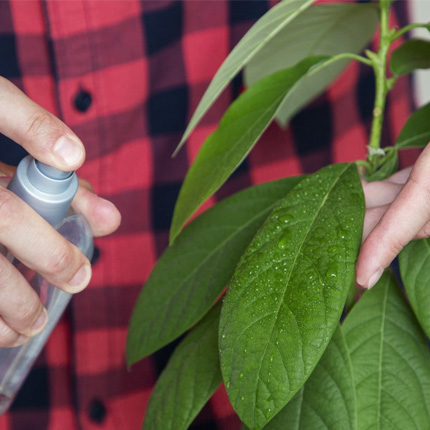How to Grow an Avocado From the Seed at Home
Avocado is highly valued not only for its taste, but also for its composition rich in useful elements. Each ripe fruit contains a large amount of minerals, vitamins, and fatty acids necessary for the body health. That is why many amateur gardeners have repeatedly tried to grow avocados, but all to no avail. This tropical plant is too demanding for certain conditions. However, if everything is too difficult in the open field, then at home, on the windowsill, it is quite possible to get a positive result. You can order avocados, succulents, or flowers in Kyiv online without leaving your home or office. Previously, we have considered the benefits of elderberry flowers, and now let us learn about the specifics of growing avocados from the seed at home.
Buying the Avocado in a Store

Such an exotic fruit as avocado can be found in any supermarket and in any season of the year. Of course, growing this fruit plant at home is very different from growing it in the native habitat of the species. It is better to learn about all the subtleties in advance, so as not to get disappointed later.
The avocado is an evergreen inhabitant of hot climate regions, bearing pear-shaped fruits with a large seed inside. The leaves of the tree are wide and dense, and the stems are elastic and curvy. Most often, 3 trees are planted in a pot so that their branches subsequently intertwine into a beautiful composition. Such a planting will be a wonderful decoration of the interior, filling the house with harmony. Also, if you want to make a bouquet of vegetables and fruits with your own hands, avocados will definitely take their rightful place in it.
You can go to the store and buy a ripe avocado for getting such a composition (and maybe valuable fruits). How do you know that it has ripened? Press it down on the opposite sides and then release it. If the avocado has returned to its original shape, it can be utilized. However, even a green avocado will ripen at your place in a few days (especially if you put it in a basket with apples or bananas).
Sprouting an Avocado Seed
Remove the avocado skin and then take out the seed. You need to plant it on the same day, as the probability of germination will be guaranteed.
There are 3 methods of planting the seed:
- An unpeeled seed is planted in the soil (⅓ should stick out from above). Water it once a week.
- Make 3 holes in the seed with matches or toothpicks (the holes should be about 3 mm / ~0.1 in. deep) and put it in a glass of water. Note that the areas with punctures should not remain at the top, i.e. be dry.
- Peel the seed and place it in a glass of water, leaving ⅓ to the top. Keep in mind that a pre-cleaned seed will germinate faster. Additionally, it will be more convenient for you to monitor the formation of roots and stems.

It is better to plant a large seed, as these have more strength for growth. Ideally, the water should be purified, but it can also be settled. The temperature should be the room one. Many recommend throwing a few tablets of activated charcoal into the water so that the germination is faster. In general, with or without additives, the seed can sprout in one week as well as in two or three months, depending on the season. Spring is considered the most favorable time of the year.
Planting the Seed in the Ground
A signal that it is time to place the avocado seed in a pot with soil will be a sprout which has reached a length of about 3 cm (~1.2 in.). Pick the loose soil for the pot because the seed should “breathe”. Moisture stagnation should not be allowed in order to avoid the rotting processes; for this it is necessary to organize high-quality drainage (about 2 cm / ~0.8 in. high). The pot for the seed itself can be compact, as after a year, you will have to transplant it anyway. The seed should be ⅓ sticking out of the substrate. It is better to use purified water for avocados.
You need to put the pot with a seedling on the sunny side of the house. In order for the avocado to develop better, it can be fed with mineral fertilizers. If the sprout has become too long (this happens due to lack of light), it needs to be cut a little. Watering avocados should be moderate; if the soil is moistened by 5 cm (~2 in.) from the top, this will be enough.
As mentioned earlier, a couple of avocado seeds can be planted in one vessel to create decorative weaving from their sprouts. The main condition is not to tighten the sprouts too much.
The avocado flowering will please you at about 3 years of life. The inflorescences of the plant are small yellow flowers. If you want the tree to start producing fruit, you must think ahead and plant a few seedlings so that they can cross-pollinate. It will be a big plus if in the summer you can take the pot with the plant to the garden and put it on a sunny lawn shaded by trees.
Growing Conditions for Avocados

Like all plants, avocados need proper care, and even more so in an unnatural habitat. Since the avocado is an inhabitant of the tropics, the plant feels great during the warm periods of the year, but the problems begin in the cold season. Let’s cover everything in due order.
Avocado Placement
The best place for an avocado pot is on a windowsill that faces west. The plant loves lots of light; however, the latter should be diffused. The avocado will develop in the shade as well, but you don’t want an undersized flower with faded leaves, right?
Required Temperature
Avocados will do well at room temperature. However, sudden changes in temperature and draughts must be avoided; otherwise the leaves will begin to fall off. Many try bringing the avocado to the veranda or loggia in summer, thinking that their exotic friend will be happy with the warmth and sun, which is actually wrong. You will not be able to keep track of the changing ambient temperature outdoors. In the cold season, the temperature should not fall below 20°C (68°F). There is an opinion among scientists that the avocado will be guaranteed to bear fruit if it is immersed in hibernation (i.e. gradually reducing the room temperature to 12°C / 53.6°F). However, implementing this is not easy, especially at home.
Required Humidity
This evergreen plant is accustomed to tropical humidity, and dry air is detrimental to it. Consequently, regular spraying is vital for avocados, but care must be taken that drops do not fall on the tree, as this can cause “wounds” on the leaves. Humidify the air around the pot or place moist moss in a saucer on the windowsill next to it.
Avocado Care

Caring for this exotic plant is a set of actions familiar to gardeners, but with some specifics.
Watering
Watering the avocado should be regular and generous, but not too frequent. The state of the topsoil will tell you if it’s time to water the plant. Have you noticed that the substrate dried up? Wait another 2 or 3 days, and you can start watering. The soil will have time to dry completely, and there will be no waterlogging.
Top Dressing
You do not need to top dress avocados in the cold season. However, from the beginning of the spring and until September, the plant can be fertilized with a wide range of organic additives. If you have a top dressing for citrus fruits, you can use it too.
Transplanting
The first year of avocado’s life is characterized by the fairly rapid growth. Transplantation will be necessary when the length of the sprout is approximately 15 cm (~6 in.). Young avocados (up to 4 years old) need to be replanted every year in the spring, and an adult tree, about once every 3 years. Pay attention to the soil picked for the plant. The avocado loves the loose and airy soil of low acidity. Use the following method for transplanting: carefully transfer the avocado without clearing the roots of the soil clod.
Pruning

An avocado tree with dense glossy leaves can be a worthy interior decoration. Still, a little knowledge in the field of floriculture will not hurt. By its nature, the avocado sprout stretches in height. The young shoots must be cut in order for the plant to be not elongated, but fluffy, like a tree crown. However, pinching the tops should be done only when there are already at least a dozen leaves on the trunk. Lateral branches will develop faster if the top of the avocado is cut in time. When enough leaves grow on the side, you can cut them too.
Avocado pinching is done in early March. Tweezing is needed not only to ensure that the tree has a fluffy crown, but also to comprehensively improve the plant’s development. What shape the crown of your avocado tree will be depends only on your wishes and preferences.
Diseases, Pests, and Other Issues
The principal pests that most often affect avocados are spider mites and scale insects. They have been widely studied, and, on the whole, all houseplants in pots suffer from them. The tick eats the leaves of the plant, and is also a carrier of various diseases that the other inhabitants of your windowsills can suffer from. A scale insect sucks all the juices from the plants. To get rid of these parasites, it is best to use insecticides, which are sold in specialized stores.
You may encounter additional issues when growing avocados – for example, the dried ends of the leaves. This can happen if you do not follow the rules for watering and moistening the plant. The leaves may also begin to fall off. Most often, this issue occurs if the house is too cool or the plant falls under a draught. Also, if you notice that the avocado leaves have become dull, then the tree does not get enough light. Move the pot to the sunny side or pick up a good LED lamp if it’s winter.
Planting in the Open Ground

Once your avocado tree is about 40-45 cm (~15.7-17.7 in.) tall, it can be transplanted to the open ground in your garden. To prevent the new habitat from stressing out the plant, follow these simple rules:
- The avocado will most likely take root in the open ground if you live in southern latitudes.
- Give your avocado the time for gradual adjustment to fresh air. To achieve this, you can take out the pot with the plant on the veranda for half a year (but only in the warm season).
- The avocado can only survive a cold winter if you build a polycarbonate greenhouse for it and regularly hill it up.
- If you had a desire to grow the tree on the site from the start, buy the avocado of the first race (Mexican). This variety is the most cold-resistant and can easily withstand temperatures as low as -5°C (23°F).
